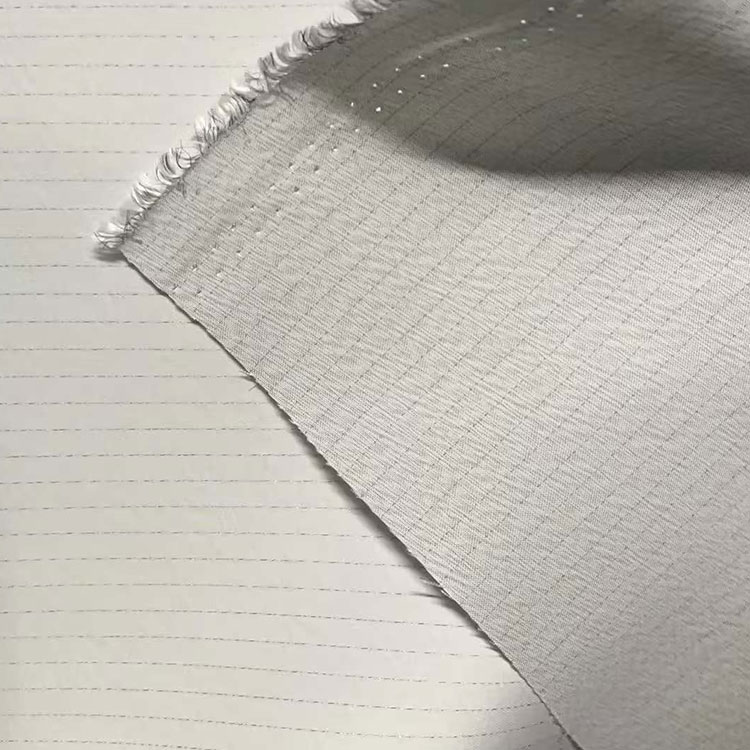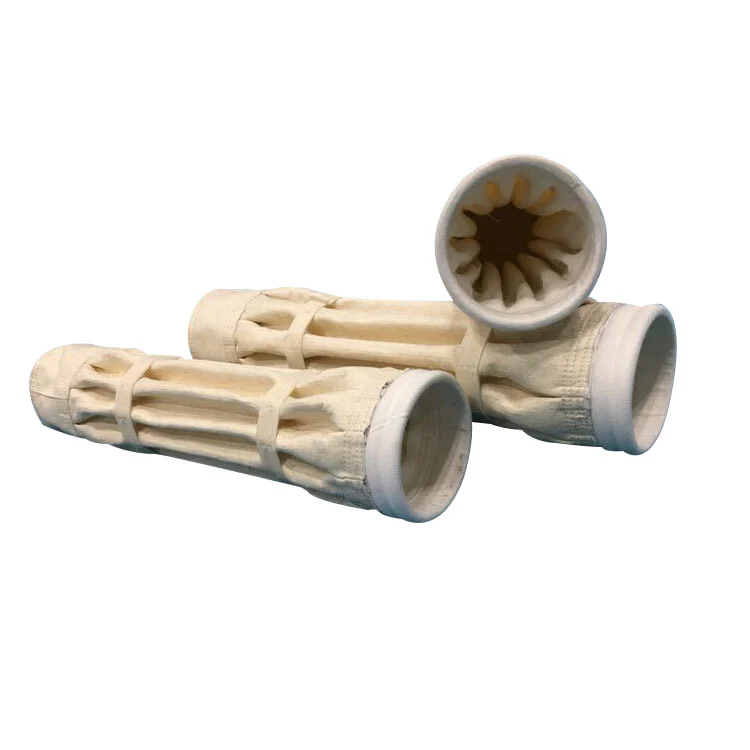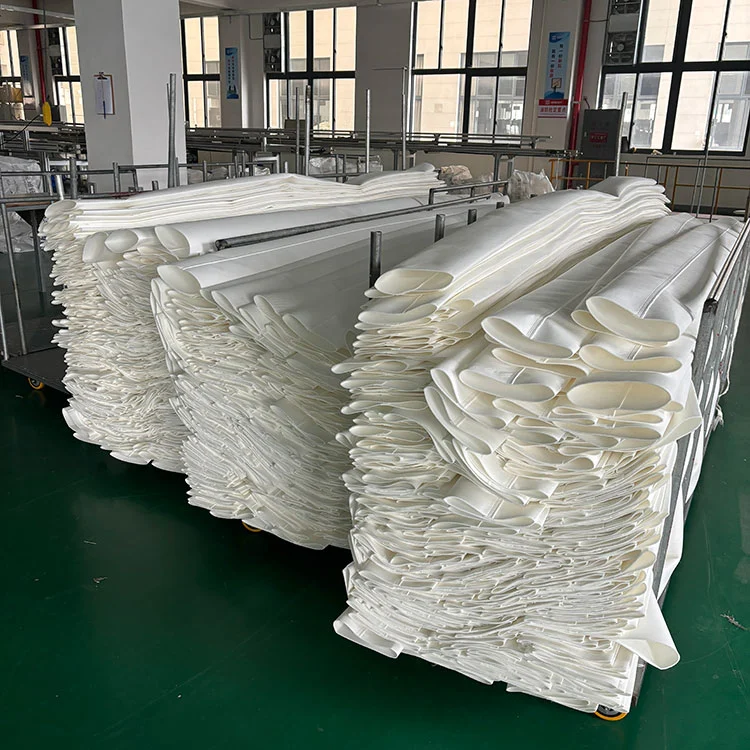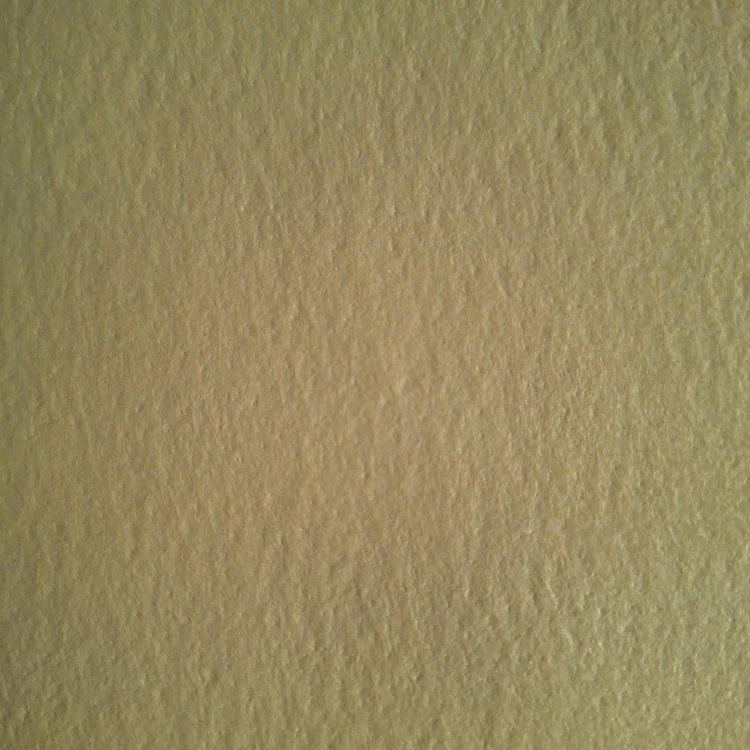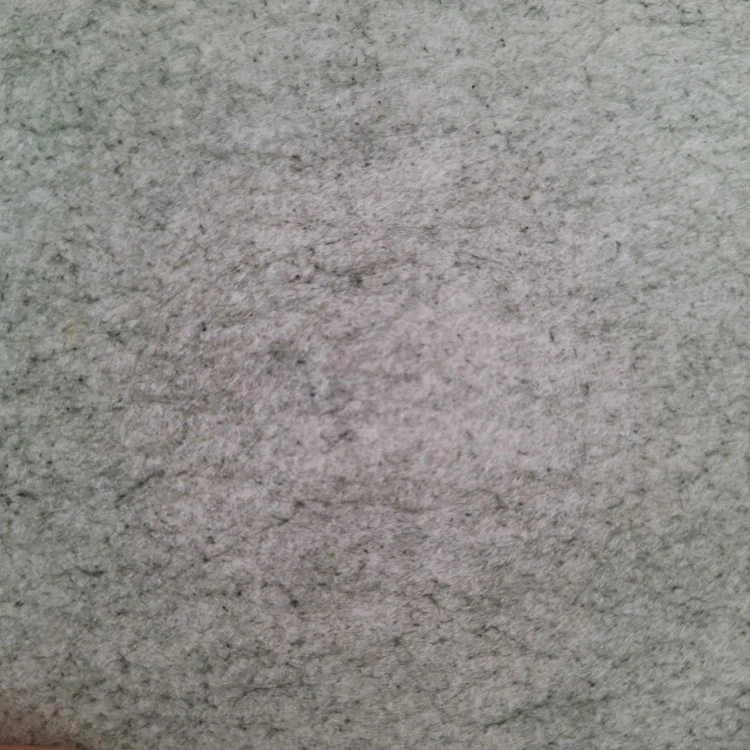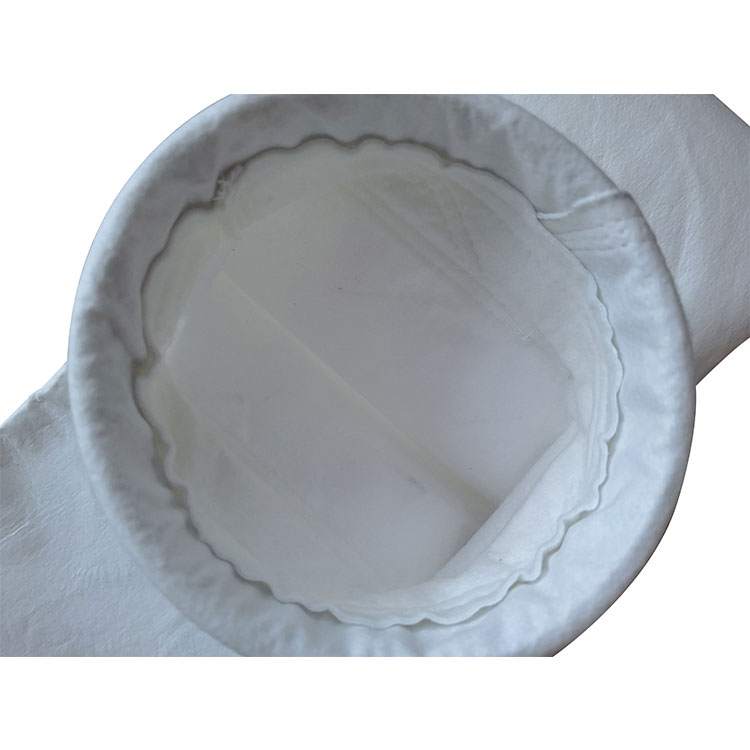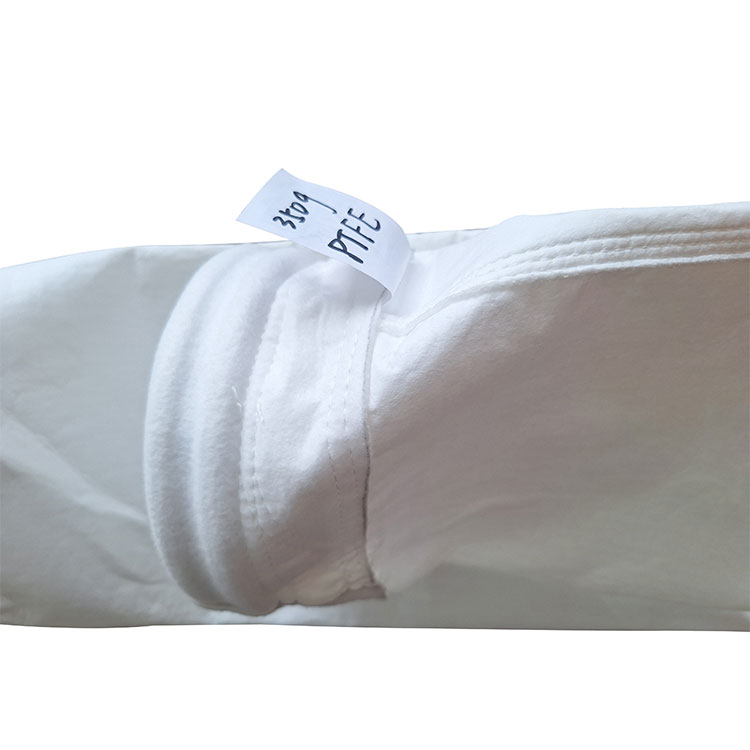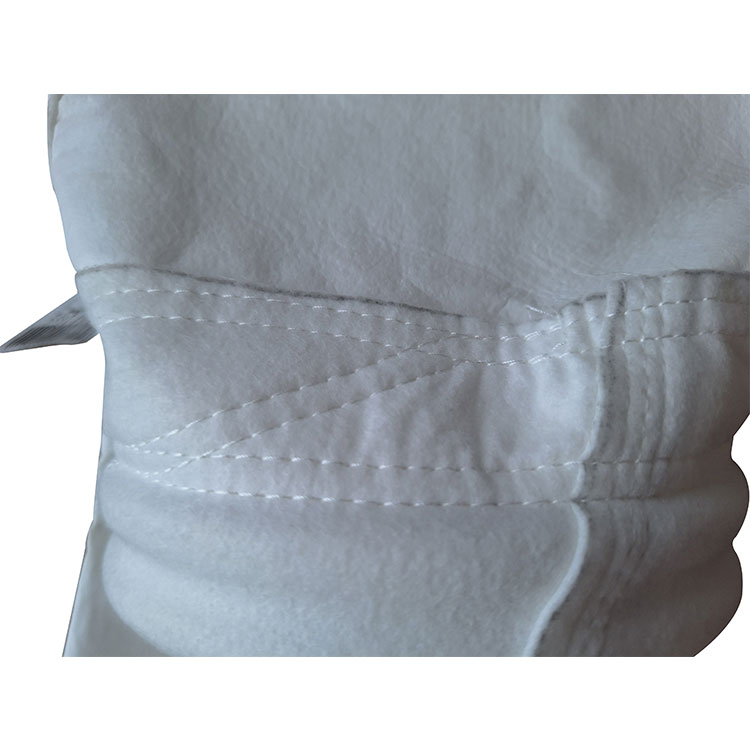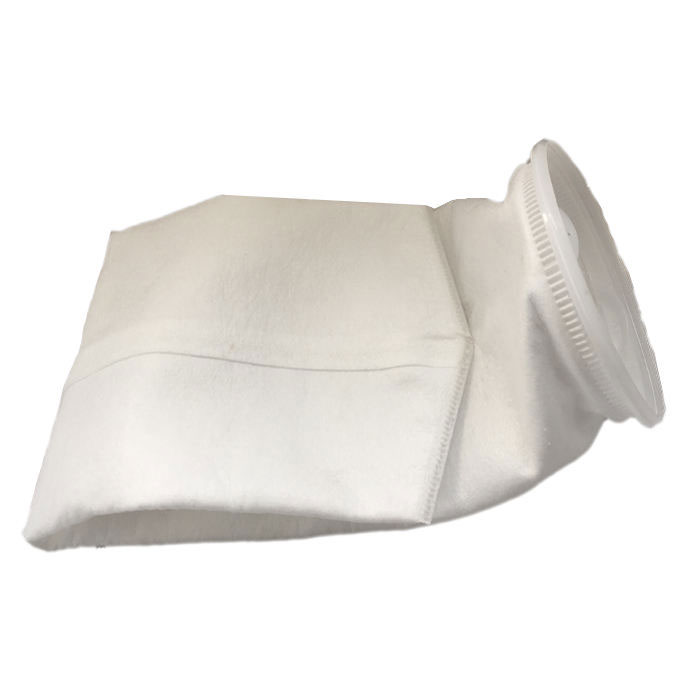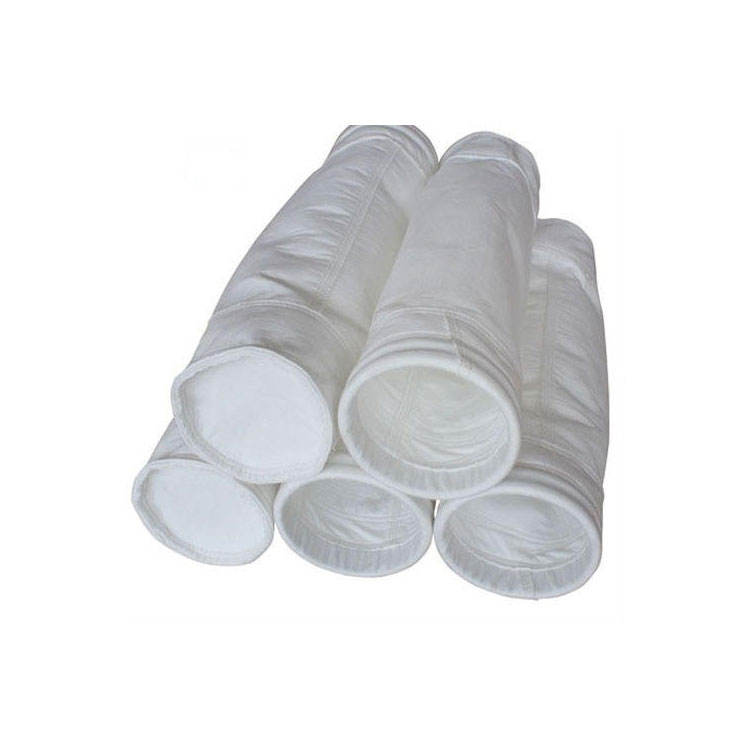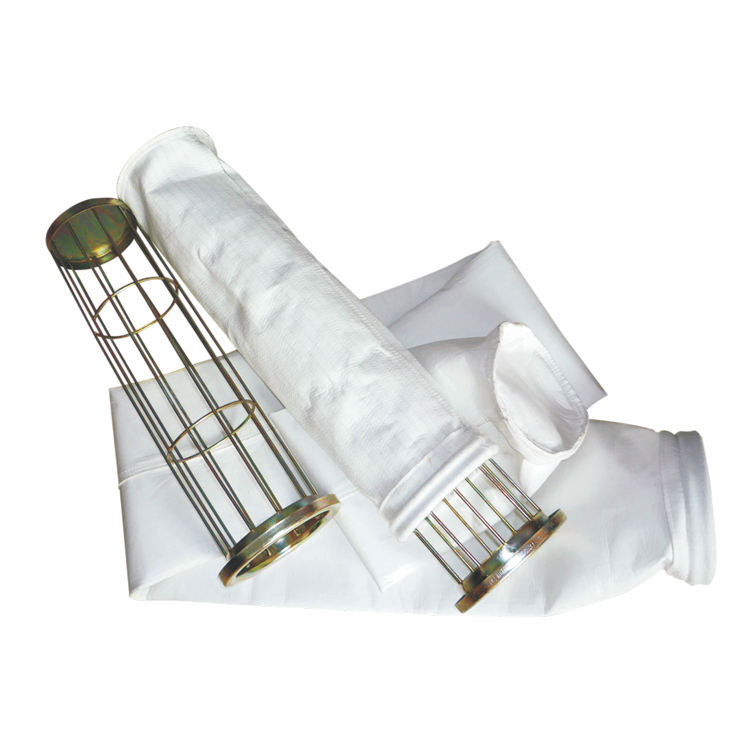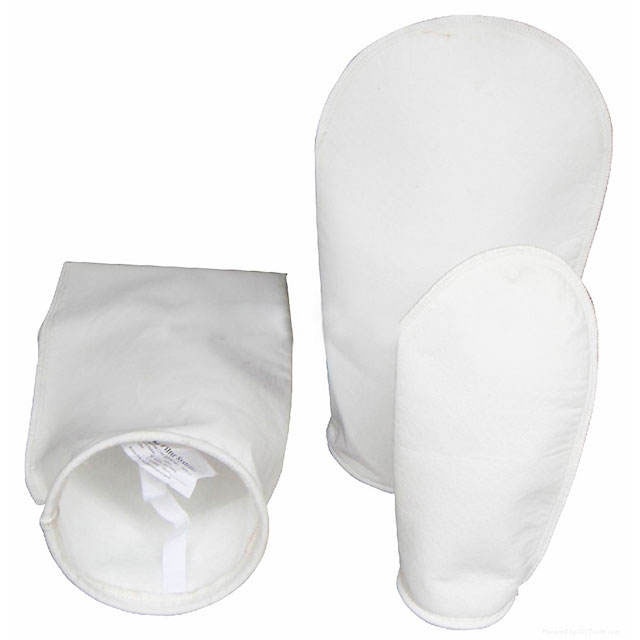PTFE Polyester Needle felt Filter Bags
Send Inquiry
Polyester filter bag is currently one of the most popular types of filter bags, is the polyester staple fibres laid into a fibre network, and then barbed needles will be fibre network reinforced into a cloth, the fibres repeatedly punctured and reinforced into a cloth, the formation of needle punched nonwoven fabrics, and finally the film is pressed together, made of PTFE polyester needle punched felt filter bag. Nonwoven fabric without warp and weft lines, fibre miscellaneous, warp and weft performance differences. Polyester filter bag air permeability than ordinary calendering filter media more than 50%, smooth surface, good air permeability, low resistance.
PTFE polyester needle punched felt filter bag is a good choice for high efficiency filtration, needle punched and then heat-setting and other treatments, both good air permeability, smooth surface, not easy to deform, not easy to accumulate dust and other advantages. In actual use, polyester needle punched felt filter bag also shows good anti-wear, anti-curl, anti-folding performance, higher mechanical strength, which means that the initial and operating resistance of the dust collector are reduced, thus improving the filtration efficiency. The temperature resistance of this filter bag is much better, and the operating temperature is usually between 130-150 degrees Celsius, with instantaneous temperatures up to 150 degrees Celsius. However, exceeding this temperature will lead to deformation or burning of the filter bag. The service life of these filter bags is also quite long, generally between 4 and 6 months.
Filter bag selection
When it comes to PTFE Polyester Needle felt Filter Bags, the fibre density of the bag affects the entire PTFE-coated dust filter bag in terms of physical properties, style, feel and so on. What exactly is fibre density? Fibre density is basically the thickness of the fibres.
So, how much PTFE-coated dust filter bag fibre density is good? The air permeability of a filter bag depends on the size of the fibres. This is an important technical indicator of the bag's filter media, so we choose the fibre density to meet the amount of air permeability of the filter media as a prerequisite.
If you need to coat, we can use 600g/m², 700g/m² or less weight needle felt. PTFE film acts as the "primary dust layer", and material exchange is done on the film surface. This means the film starts to filter effectively straight away. So, once the felt is laminated, it just acts as a carrier for the membrane, and using even more felt won't affect the air permeability.
Although PTFE has some special properties, the amount of fibres used in the filter media is also down to the design requirements. If you don't need the bag to be coated, we'd recommend using fine fibres to make sure the filter media is tight and the filtration is efficient.
We can analyse and adjust the fibre density of the dust bag to suit different working conditions, so that it's easy to get air through and the dust is removed effectively.
Filter bag advantage
PTFE Polyester Needle felt Filter Bags are a new type of filter material made from a layer of polytetrafluoroethylene (PTFE) film on top of ordinary filter material. The film's unique three-dimensional mesh structure means that dust can't pass through, so there's no need to worry about pore clogging. So it reduces dust emissions. This is surface filtration. Coated filter media can achieve near-zero emissions, and because the film isn't sticky, the friction coefficient is small, so the powder cake will automatically fall off. This ensures that the equipment resistance is stable for a long time, so it's the ideal choice of filtration materials.
1. Usually, the filtration method used in industry is deep filtration, which forms a dust layer on the outside of the filter bag and is useful for filtration. The filtration process takes a long time to start filtering, about 10% of the whole process. It's pretty resistant and doesn't filter much, and it has a high back pressure when it's filtering and blowing. It also uses a lot of energy and doesn't last long. It's big and covers a lot of area. The PTFE Polyester Needle felt Filter Bag is outside filtration, so dust can't get in. It's very effective at blocking dust, whether it's coarse or fine. There's no initial filtration period, so it's always in use. It's very efficient, filtering almost 100% of the time.
2. Long life. No matter what kind of clearing mechanism is chosen, the PTFE Polyester Needle felt Filter Bags can show excellent performance, and it is a kind of filter material that can completely show the filtration function of the dust collector planning function. Therefore, the cost is low. Coated filter media is a kind of soft but not lose the strong structure of the organisation, there is enough mechanical strength, coupled with outstanding desliming, down the intensity of ash removal, in the low and stable pressure loss, can be used for a long time to extend the life of the filter bag.
3. Low pressure, high flux continuous operation. Traditional deep filtration filter media, once put into use, dust penetration, set up a dust layer, air permeability will be agile decline. Filtration, the internal accumulation of dust to form a blocking phenomenon, and then increase the resistance of the dust removal equipment. PTFE Polyester Needle felt Filter Bags with fine aperture and its viscosity, so that the dust penetration rate is close to zero, put into use to provide the best filtration power, when deposited in the film filter media on the outside of the filtered material reaches a certain thickness, it will be actively dropped, easy to clear, so that the filtration pressure has been maintained at a very low level, the air flow has been maintained at a high level, can be operated successively.
4. Simple ash removal. Any keep a kind of filter media operating pressure loss depends directly on the amount of dust remaining or staying on the exterior of the filter media.PTFE polyester needle-punched felt filter bag only need a few seconds to clear the ash, so it has very good characteristics of clearing the ash, each time the ash can be completely removed from the layer of dust, the interior of the media will not form a clogging, will not change the porosity and mass density, and can often be maintained in the low-pressure loss of operations.
Product parameters
| NAME | Polyester needle felt filter material | |||||
| MATERIAL | Polyester/polyester filament fabric | |||||
| GRAM WEIGHT(g/m2) | 400 | 450 | 500 | 550 | 600 | |
| THICKNESS(mm) | 1.4 | 1.55 | 1.75 | 1.95 | 2.15 | |
| AIR PERMABLITY(m3/m2/min) | 21 | 18 | 16 | 13 | 12 | |
| TENSILE STRENGTH(N/5×20cm) | WARP | >1000 | >1000 | >1100 | >1100 | >1150 |
| WEFT | >1250 | >1300 | >1400 | >1500 | >1500 | |
| ELONGATION(%) | WARP | <25 | <25 | <25 | <25 | <25 |
| WEFT | <45 | <45 | <45 | <45 | <45 | |
| Bursting strength(N/m2) | 400 | 450 | 500 | 550 | 600 | |
| Continuous operating temperature(℃) | ≤130 | ≤130 | ≤130 | ≤130 | ≤130 | |
| Instant operating temperature(℃) | 150 | 150 | 150 | 150 | 150 | |
| ACID RESISTANCE | GOOD | GOOD | ||||
| Alkali resistance | MEDIUM | MEDIUM | ||||
| Wear resistance | EXCELLENT | EXCELLENT | ||||
| Hydrolytic stability | MEDIUM | MEDIUM | ||||
| Post-processing method | Singeing, calendering, heat setting (mirror treatment) | |||||

